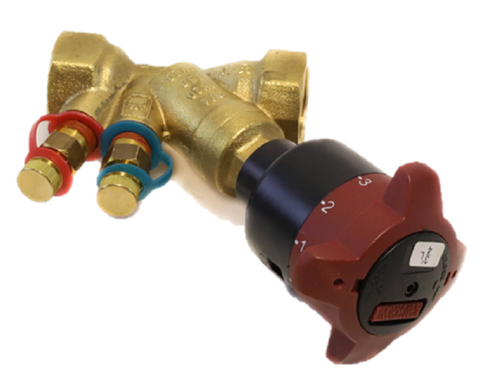
Armstrong Fluid Technology 571110LF-361 Valve
571110LF-361 is the direct replacement for 571109-361, 571110-361
Armstrong 571110LF-361 Circuit Balancing Valve – 3/4" NPT, Low Flow, Brass Body (Model CBV075VTCR-LF)
The Armstrong Fluid Technology 571110LF-361 is a high-performance 3/4" NPT Circuit Balancing Valve, expertly engineered for precise control of flow rates in hydronic HVAC systems. Also known as Model CBV075VTCR-LF, this low-flow valve is designed with a durable brass body, EPDM elastomers, and PT ports, delivering reliable operation at a maximum working pressure of 300 psi and temperature range of -4°F to 300°F.
Key Features:
-
Connection Size: 3/4" NPT Threaded
-
Flow Range: 0.41 – 3.11 GPM
-
Material: Lead-Free Brass Body with EPDM Elastomers
-
Max Working Pressure: 300 PSI
-
Temperature Range: -4°F to 300°F
-
Design: Multi-turn, ‘Y’-pattern, globe-style valve for superior control
-
Model: CBV075VTCR-LF
-
OEM Part Number: 571110LF-361
Product Benefits:
-
Ensures precise circuit balancing for heating and chilled water systems
-
Enhances occupant comfort by maintaining proper flow distribution
-
Trusted in thousands of installations worldwide
-
Designed for easy adjustment and long-lasting performance
-
Compliant with lead-free regulations
Applications:
Ideal for commercial, industrial, and institutional HVAC systems, the Armstrong CBV075VTCR-LF circuit balancing valve is essential for engineers, contractors, and technicians who demand accurate flow control and reliable system performance.
Armstrong circuit balancing valves are a preferred choice globally for delivering consistent, efficient comfort control in hydronic systems.
QUESTIONS & ANSWERS
Have a Question?
Be the first to ask a question about this.
